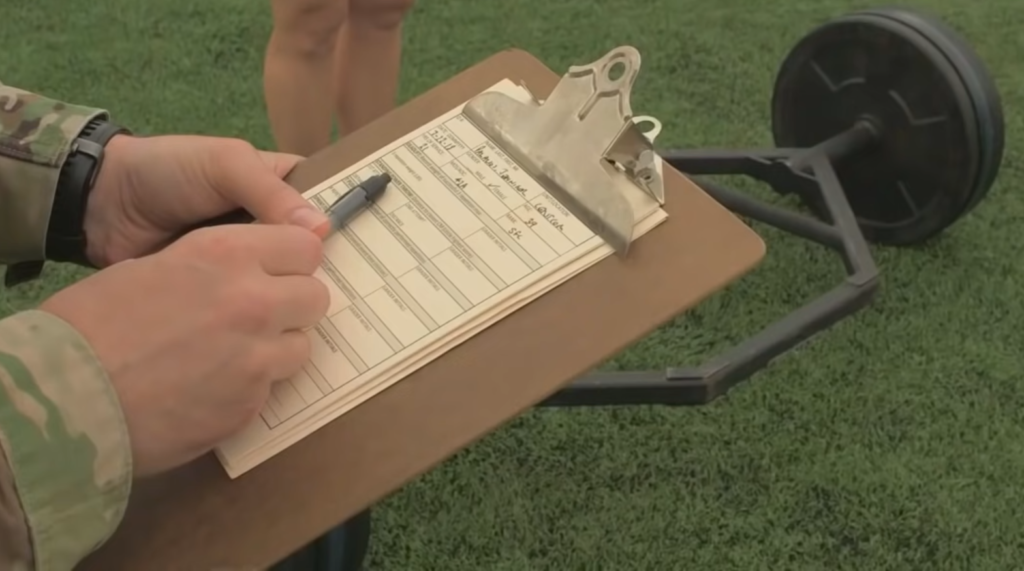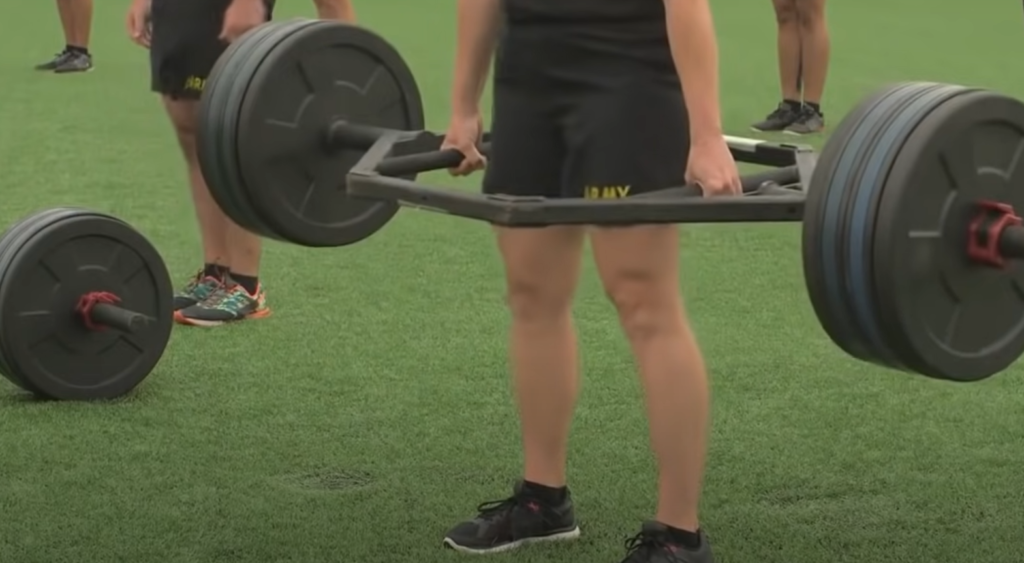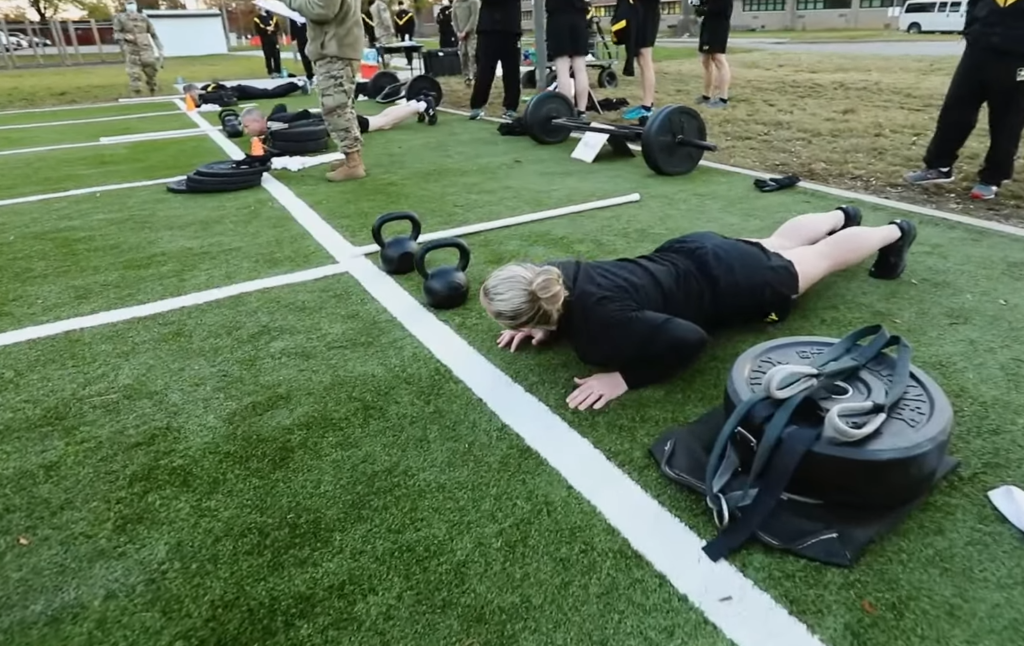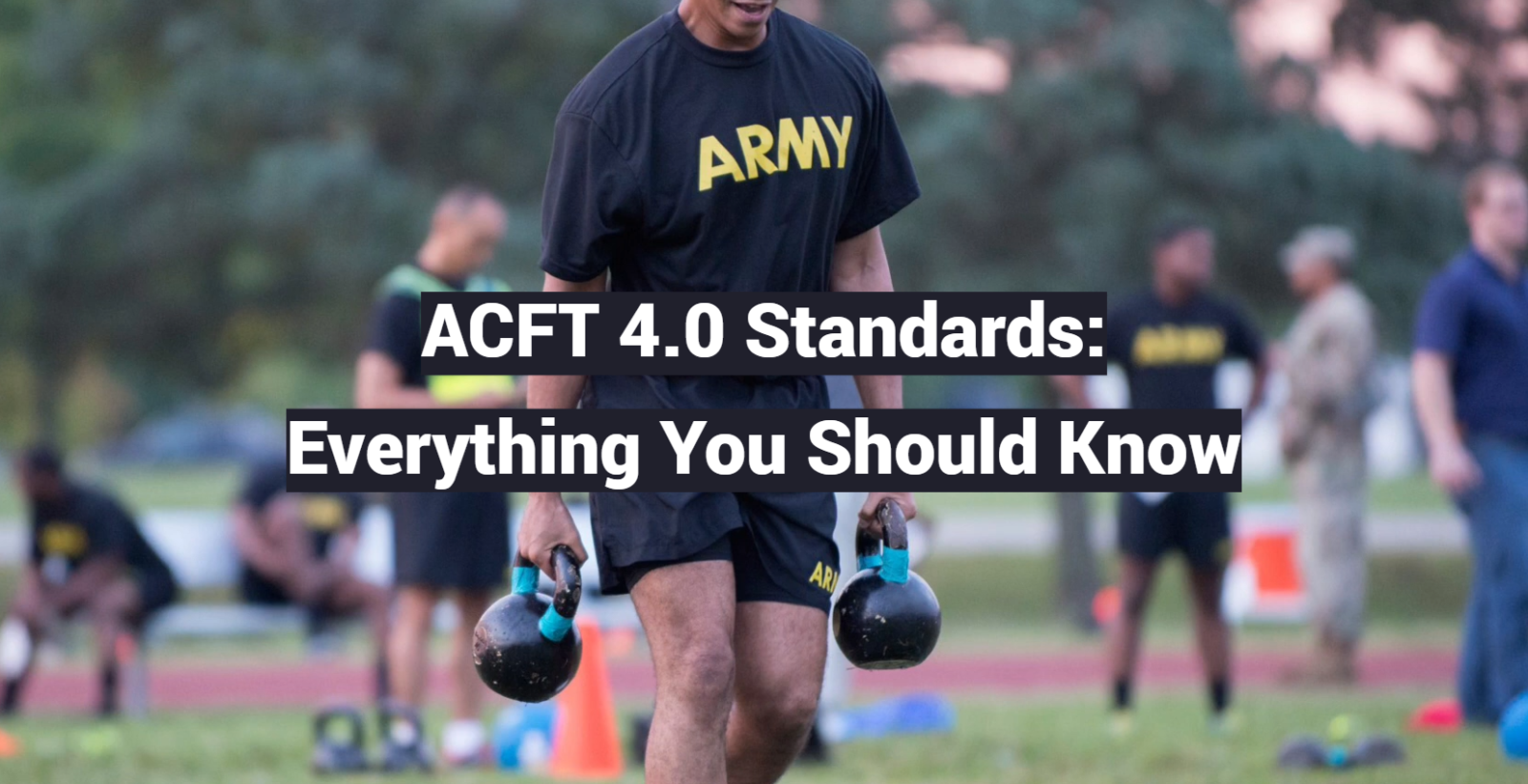Embarking on a new era of physical fitness evaluation, the introduction of ACFT 4.0 Standards marks a significant chapter in the United States Army’s commitment to ensuring soldiers are not just fit but prepared for the dynamic challenges of modern warfare.
Building upon the foundation laid by its predecessors, ACFT 4.0 sets the stage for a more refined and comprehensive assessment, addressing feedback and evolving military needs. This article delves into the intricacies of the latest standards, offering a comprehensive guide to everything soldiers and military enthusiasts should know.
From changes in scoring methodologies to adjustments in specific events, ACFT 4.0 reflects a commitment to continuous improvement, aiming to strike a balance between fairness and the robust evaluation of combat readiness. As the Army adapts to the ever-shifting landscape of global security, understanding the nuances of ACFT 4.0 is paramount for soldiers and leaders alike, ensuring an effective and equitable system that fosters not only physical strength but resilience and adaptability on the modern battlefield.
ACFT 4.0 Standards Of 2023: What Changed and Why?
[tds_note]The year 2023 saw another evolution of the US Army’s fitness assessment, the Army Combat Fitness Test (ACFT) – this time with the introduction of ACFT 4.0 [1]. This wasn’t just a minor tweak; it marked a significant shift in philosophy and structure, leaving many soldiers wondering what changed and why. Buckle up, as we delve into the details of ACFT 4.0, exploring the most significant changes and the rationale behind them.[/tds_note]
Goodbye Gendered Scoring, Hello Performance-Based Norms:
One of the most talked-about changes is the elimination of gender-specific scoring tables. Previously, men and women were held to different standards, often causing frustration and perceived unfairness. With ACFT 4.0, a single scoring table based on age and performance takes center stage. This move acknowledges that physical fitness doesn’t have a gender; the ability to perform specific tasks effectively matters more than conforming to traditional gender norms.

The Plank Steps Up, Leg Tucks Take a Seat:
Remember the leg tucks, that dreaded event leaving many gasping for air? ACFT 4.0 introduces the plank as an official alternative. This seemingly simple change holds weight; planks engage multiple muscle groups, offering a more holistic assessment of core strength and stability compared to the isolated movement of leg tucks. It also caters to individuals with limitations or injuries that might hinder leg tucks.
Minimum MOS Standards Go the Way of the Dodo:
Previously, certain Military Occupational Specialties (MOS) had higher ACFT score requirements. This created a tiered system where some soldiers faced a steeper fitness hurdle regardless of their specific job demands [2]. ACFT 4.0 ditches this approach, focusing on a universal standard for all soldiers. This aligns with the belief that a baseline level of fitness benefits everyone, regardless of MOS, fostering a more cohesive and prepared fighting force.
Streamlining for Efficiency:
ACFT 4.0 streamlines the test by removing the hand release push-ups and the sprint-drag-carry. While these events served specific purposes, concerns about practicality and potential for injury led to their removal.
The revised test retains six core events:
- Three-mile run: Assessing cardiovascular endurance and stamina;
- Deadlift: Measuring lower body strength and power;
- Standing throw: Evaluating upper body strength and explosiveness;
- Push-ups: Gauging upper body strength and endurance;
- Plank: Testing core strength and stability;
- Two-minute step test: Measuring aerobic capacity and recovery;
This condensed format reduces testing time and allows for more frequent assessments, crucial for monitoring progress and tailoring training programs.

The “Why” Behind the Changes:
The revisions in ACFT 4.0 stem from a desire to create a more inclusive, efficient, and effective fitness assessment for the modern soldier.
Here’s a deeper dive into the reasoning:
- Inclusivity: Gender-neutral scoring and plank alternatives address concerns about fairness and accessibility for all soldiers;
- Efficiency: Streamlining the test saves time and resources, allowing for more frequent assessments and targeted training;
- Effectiveness: The chosen events measure skills directly relevant to combat performance, ensuring soldiers are prepared for the demands of their jobs;
- Injury Prevention: Removing some events with higher injury risk prioritizes soldier safety and well-being;
- Focus on Functional Fitness: The revised ACFT emphasizes movements applicable to real-world military scenarios, moving away from isolated exercises;
Reactions and the Road Ahead:
The changes in ACFT 4.0 haven’t been without their share of mixed reactions. Some soldiers welcome the inclusivity and focus on functional fitness, while others express concerns about the difficulty of adapting to the new standards. Regardless of initial impressions, understanding the rationale behind the changes can help with acceptance and adjustment.
Looking ahead, it’s crucial to remember that ACFT 4.0 is an ongoing project. Data collection and analysis will continue, with potential further modifications based on feedback and performance metrics. This iterative approach ensures the ACFT remains relevant and effective in preparing soldiers for the evolving demands of military service.

Major ACFT Events (2024)
The Army Combat Fitness Test (ACFT) is a fitness test for the U.S. Army that consists of six events to measure physical fitness and readiness for combat.
Below is a detailed breakdown of each event:
Event #1: Maximum Deadlift (MDL)
How to Perform
The Maximum Deadlift event tests lower body strength. Soldiers must lift a hex bar loaded with weights off the ground from a standing position, stand up straight, and then return the weight to the ground.
Scoring
Scoring is based on the maximum weight lifted in two attempts.
Getting Ready
To prepare, soldiers should perform strength training exercises that target the muscles used in deadlifts, like the glutes, hamstrings, and lower back.
Standard Equipment:
- Hexagonal weight bar;
- Weights;
- Weight clips;
Proper Technique:
- Stand in the center of the hex bar and grip the handles evenly;
- Keep your back straight, engage your core, and push through your heels to stand up, keeping the bar close to your body;
- Lock out at the top with your shoulders back, then lower the bar to the ground under control;
Event #2: Standing Power Throw (SPT)
How to Perform
Soldiers throw a 10-pound medicine ball backward and overhead for distance [3].
Scoring
The score is the distance thrown, measured to the nearest 0.5 meter.
Getting Ready
Preparing involves practicing the throw and building explosive power through plyometric and core strengthening exercises.
Standard Equipment:
- 10-pound medicine ball;
- Measurement tape;
Proper Technique:
- Face away from the direction of the throw;
- Hold the medicine ball at hip level and squat slightly;
- Explosively extend the hips, knees, and ankles while swinging the ball overhead to release it backward over the head;

Event #3: Hand Release Pushups (HRP)
How to Perform
This event measures upper body muscular endurance. Soldiers start in a prone position, perform a pushup, lower themselves back to the ground, lift their hands off the ground briefly, and repeat.
Scoring
The number of correctly performed repetitions within the time limit determines the score.
Getting Ready
To get ready, soldiers should include pushups, upper body strength, and endurance exercises in their regimen.
Standard Equipment:
- None (just a flat surface);
- Proper Technique;
- Start in the standard pushup position;
- Lower your body to the ground, lift your hands off the ground, then push back up to the starting position;
Event #4: Sprint/Drag/Carry (SDC)
How to Perform
The SDC involves five different activities: sprinting, dragging a sled, carrying kettlebells, performing lateral shuffles, and running again.
Scoring
The time taken to complete the course is the score.
Getting Ready
Prepare by practicing each component and focusing on building endurance, strength, and agility.
Standard Equipment:
- Sled with weight;
- Kettlebells;
- Markers for designated distances;
Proper Technique:
- Sprint down and back along the course;
- Drag a weighted sled towards you using a backwards walk;
- Carry kettlebells down and back with a proper grip and posture;
- Shuffle sideways down and back, facing the same direction both ways;
- Sprint down and back one final time;
Event #5: Plank
How to Perform
The plank event tests core endurance. Soldiers maintain a plank position for as long as possible.
Scoring
Duration in the plank position determines the score.
Getting Ready
Incorporate planks and various core exercises into workouts to increase core endurance.
Standard Equipment:
- A mat or flat surface;
- Stopwatch;
Proper Technique:
- Place forearms on the ground with elbows under shoulders, and feet together;
- Keep the body straight from head to heels;
- Maintain this position without sagging or raising the hips;

Event #6: Two-Mile Run
How to Perform
Soldiers run two miles as fast as possible on a measured, generally flat outdoor course.
Scoring
The score is based on the time taken to complete the two-mile run.
Getting Ready
Build cardiovascular endurance through various forms of running and cross-training.
Standard Equipment:
- Running track or marked course;
- Stopwatch;
Proper Technique:
- Use an efficient running form, with relaxed shoulders and a steady pace;
- Focus on deep, rhythmic breathing;
About Leg Tucks and Planks
Initially, the leg tuck was part of the ACFT to measure core strength. Due to accessibility issues with equipment and varying abilities among soldiers, the plank exercise was introduced as an alternative to the leg tuck.
The plank is considered a less complex movement and provides an option for soldiers who might struggle with the leg tuck’s upper body strength requirements. Both exercises aim to test core muscle stability, which is vital for most military tasks.
ACFT 4.0 Scoring Explained:
Key Points:
- Gender-Neutral Scoring: ACFT 4.0 eliminates gender-specific standards. Scoring is now based on age and performance, aligning with the Army’s focus on inclusivity and combat readiness;
- Age-Based Norms: Scoring tables are divided into age groups (17-21, 22-26, 27-31, 32-36, 37-41, 42-46, 47-51, 52-56, 57-61) to account for natural variations in physical abilities across age ranges;
- Performance-Based Scoring: Points are awarded based on the level of performance achieved in each event, not simply meeting a minimum standard. This encourages soldiers to strive for continuous improvement;
- Passing Requirements: To pass the ACFT, soldiers must score a minimum of 60 points in each event and a cumulative score of 360 across all six events [4];
Individual Event Scoring:
- Maximum Deadlift (MDL): Points are awarded based on the maximum weight lifted, ranging from 60 points for the minimum weight to 100 points for the highest weight
- Standing Power Throw (SPT): Points are awarded based on the distance of the throw, ranging from 60 points for the minimum distance to 100 points for the farthest distance;
- Plank: Points are awarded based on the duration of the plank hold, ranging from 60 points for the minimum time to 100 points for the longest time;
- Two-Mile Run: Points are awarded based on the time it takes to complete the run, ranging from 100 points for the fastest time to 60 points for the slowest time;
Alternate Aerobic Events:
- Bike Test: Soldiers who are unable to perform the two-mile run due to medical reasons can opt for a 25-minute stationary bike test;
- 5000-Meter Row: This option is also available for those who cannot complete the two-mile run [5];
[tds_note]The Army has not yet released specific point values for each age group and event within ACFT 4.0. The information provided above is based on general principles and scoring trends from previous versions of the ACFT. The official scoring tables will be published and disseminated when available.[/tds_note]

FAQ:
1. How was the new ACFT scoring scale developed?
The new ACFT scoring scale was developed through extensive research and field testing conducted by the U.S. Army Center for Initial Military Training (CIMT). The purpose was to establish a test that would accurately measure a soldier’s readiness for the physical demands of combat across all roles.
2. Are pregnant or postpartum soldiers required to take the ACFT?
Pregnant and postpartum soldiers are not required to take the ACFT. They are exempt until cleared by a medical provider and have completed the recovery period as per the Army’s guidelines.
3. Why do soldiers in a non-combat MOS need to take a “combat” fitness test?
The ACFT is designed to assess all soldiers’ physical fitness regardless of their Military Occupational Specialty (MOS) since all soldiers could potentially face physical challenges in combat situations.
4. Will the ACFT change again?
The Army may make future adjustments to the ACFT as necessary to ensure it continues to accurately reflect the physical demands placed on soldiers and maintain standards of readiness.
5. What hasn’t changed for ACFT 4.0?
The fundamental structure and events of the ACFT have remained consistent, with six events designed to measure different aspects of physical fitness.
6. What does the future of the ACFT look like?
The future of the ACFT will likely involve continuous evaluation and refinement to adapt to the evolving requirements of combat fitness.
7. Is the ACFT harder than the APFT?
Many soldiers consider the ACFT to be more challenging than the APFT because it includes a broader range of events that test diverse elements of physical fitness.
8. When did the ACFT replace the APFT?
The ACFT officially replaced the APFT on October 1, 2020, as the Army’s physical readiness test.
9. Will the ACFT standards be based on MOS?
ACFT standards are not directly based on MOS. However, there are discussions about tailoring the standards based on the physical demands of different jobs within the Army.
10. What’s the average ACFT score in the army?
The average ACFT score varies widely among soldiers. The data for a centralized average score is not publicly available as it depends on the unit, the soldiers’ MOS, and other factors.
11. What is a really good ACFT score?
A really good ACFT score would achieve the highest category of performance, commonly referred to as the “Gold” standard, where soldiers exceed the minimum requirements by a significant margin.
12. How can you improve your ACFT score?
Improvement can be achieved through consistent training focused on strength, endurance, speed, and power, along with proper nutrition and recovery.
13. What’s the max deadlift for ACFT?
The maximum deadlift weight for the ACFT is currently set at 340 pounds for the highest score.
14. What is the most failed ACFT event?
Statistically, the leg tuck was among the most failed events, which led to its replacement with the plank exercise for the core strength assessment.
15. How long is an ACFT valid for?
An ACFT score is generally valid for 12 months.
16. How do you prepare for the new ACFT?
Preparation should include a balanced training program incorporating the specific exercises involved in each of the six events of the ACFT.
17. Is ACFT gender-neutral?
Yes, the ACFT standards were designed to be gender-neutral, with all soldiers having to meet the same minimum requirements.
18. Is 515 a good ACFT score?
A score of 515 is above average as it surpasses the minimum passing score, but individual performance goals may vary.
19. How many people fail the ACFT?
The exact number of soldiers who fail the ACFT is not specified, as it can vary, but the Army continually works to provide training resources to help soldiers meet the standards.
20. Is the ACFT hard?
The ACFT can be challenging as it is designed to test a broad range of physical capabilities, but with proper training and preparation, soldiers can successfully pass it.
21. What happens if you fail the ACFT?
If a soldier fails the ACFT, they may be given additional training and opportunities to retake the test.
22. Can you take the ACFT in the rain?
Yes, the ACFT can be conducted in various weather conditions unless the conditions are deemed unsafe.
23. What is the Black standard for ACFT?
The “Black” standard refers to the highest level of performance on the ACFT, with soldiers achieving exceptional scores in all events.
24. Can you be flagged for ACFT?
Yes, soldiers who consistently fail to meet ACFT standards can receive an adverse administrative flag that may affect their career progression.
25. Is the ACFT based on age?
No, the ACFT standards are not based on age. All soldiers are expected to meet the same fitness requirements.
26. How can you improve your ACFT deadlift?
Improvement in the deadlift can come from practicing the lift with the correct form, increasing lower body strength, and incorporating exercises that target similar muscle groups.
27. What is the minimum plank time for ACFT?
The minimum plank time required to pass the ACFT is currently set at 2 minutes.
28. Can you listen to music during ACFT?
Listening to music during the ACFT is not allowed as it may interfere with instructions and communication.
29. Who was the first soldier to max out the ACFT?
The identity of the first soldier to max out the ACFT is not publicly disclosed.
30. What are the risks of ACFT?
Risks include potential for injury if exercises are performed incorrectly or without proper preparation, similar to any physical fitness test or regimen.
Useful Video: Take ACFT 4.0 With Me | Updated Army Combat Fitness Test Standards
References:
- https://www.armycombatfitnesstest.com/post/acft3-0
- https://themilitarywallet.com/acft-standards/
- https://garagegymrevisited.com/acft-standards/
- https://www.armytimes.com/news/your-army/2022/03/23/army-combat-fitness-test-debuts-with-major-changes-to-scoring-april-1/
- https://www.operationmilitarykids.org/army-combat-fitness-test-acft-standards/






Leave a Reply